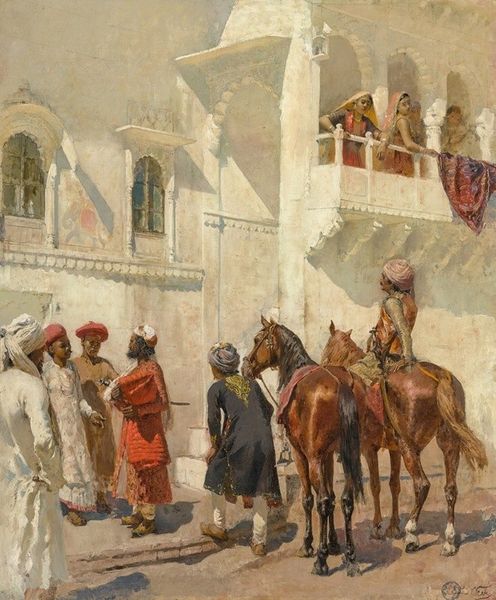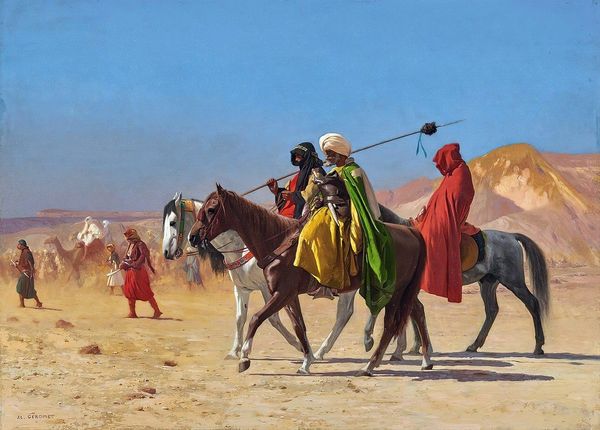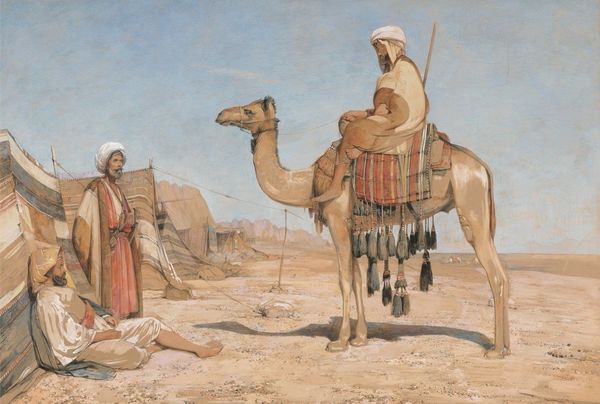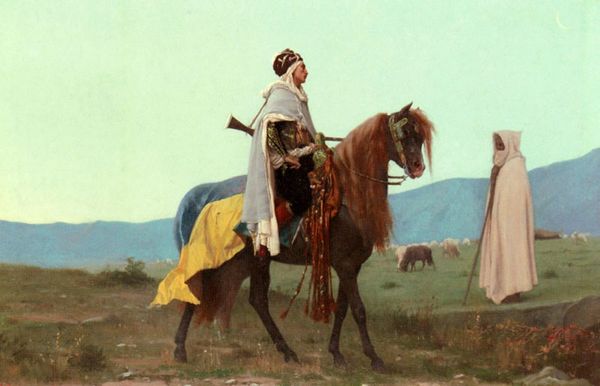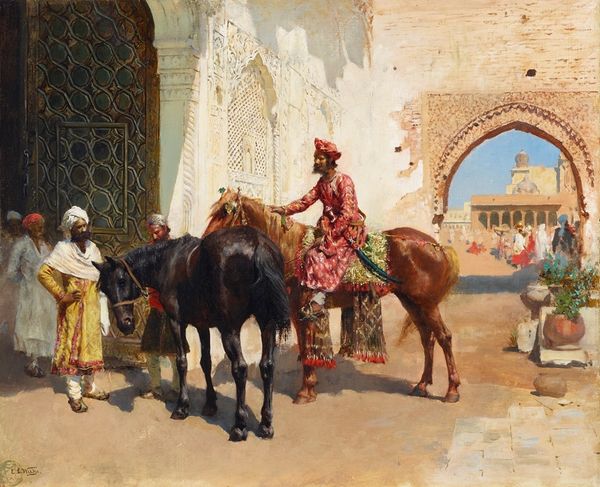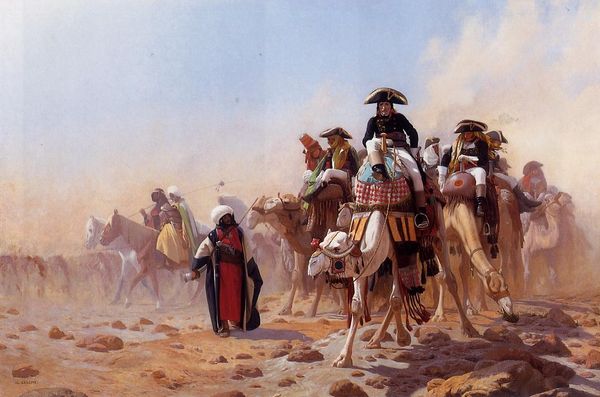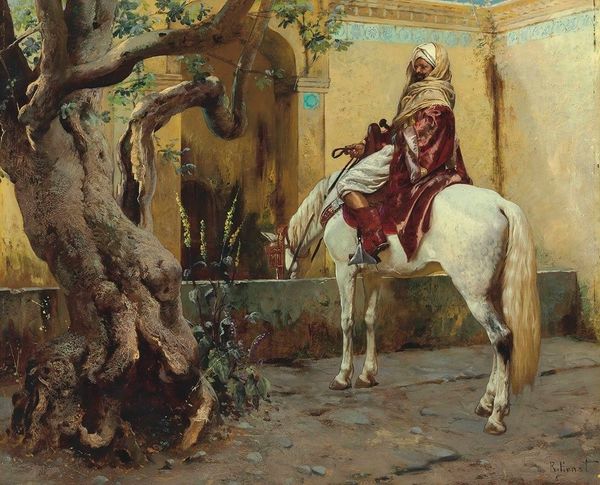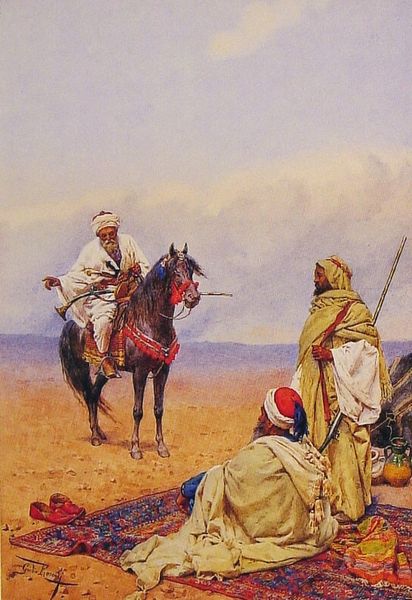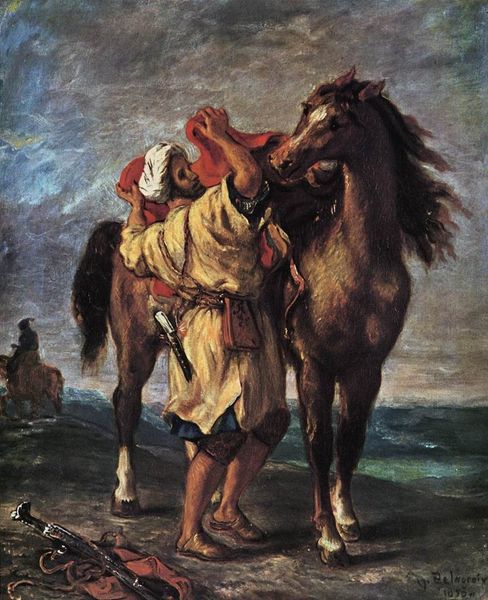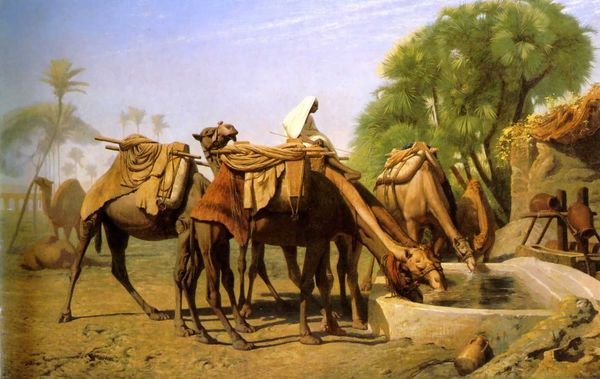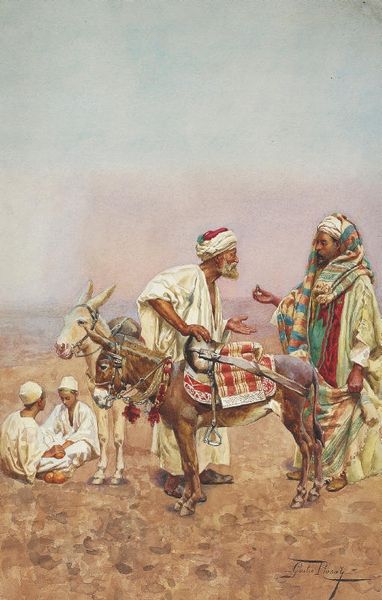
oil-paint
#
portrait
#
oil-paint
#
landscape
#
oil painting
#
male-portraits
#
orientalism
#
horse
#
street photography
#
men
#
genre-painting
#
academic-art
#
realism
Copyright: Public domain
Vasily Vereshchagin created this painting, *Kalmyk-lama,* sometime in the late 19th century. Vereshchagin, a Russian artist known for his depictions of war and travels, reflects in this painting the social and cultural dynamics of Imperial Russia's engagement with its diverse ethnic populations. The painting portrays two Kalmyk men, one mounted on horseback, in traditional attire. The Kalmyks are a Buddhist people of Mongolian origin, and their presence within the Russian Empire reflects Russia's expansion and incorporation of diverse cultures. Vereshchagin's interest in depicting the 'exotic' East was characteristic of the orientalist views prevalent during his time. These views often exoticized and romanticized non-European cultures, while ignoring the complexities of colonial power dynamics. The artist's portrayal of the Kalmyk people should be considered within the context of Russia's complex relationship with its minority populations. How does the painting reinforce or subvert stereotypes? What does it tell us about Russia's identity and its perception of 'the other?'
Comments
No comments
Be the first to comment and join the conversation on the ultimate creative platform.
